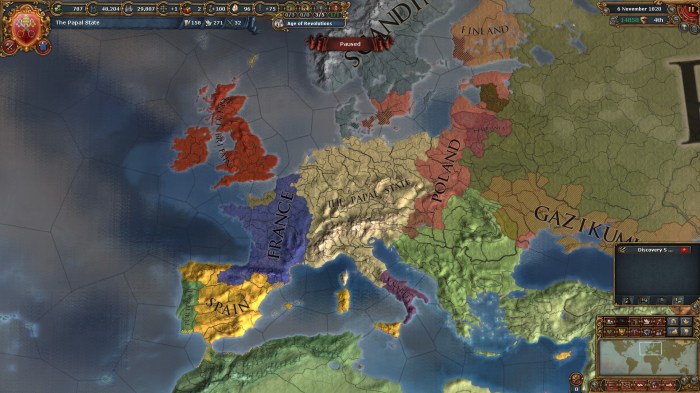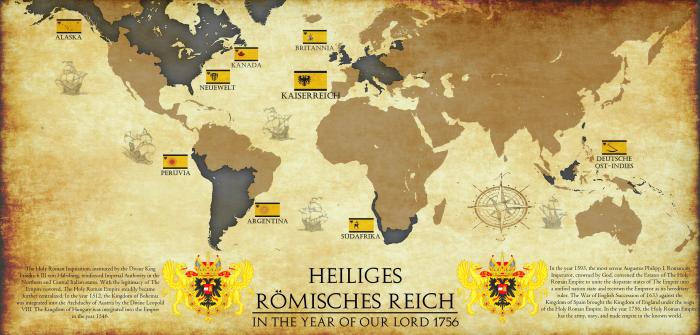Embark on an enthralling journey through the Holy Roman Empire EU4, where history intertwines with captivating gameplay. This empire, steeped in centuries of intrigue and influence, beckons you to explore its intricate tapestry of political alliances, religious conflicts, and territorial conquests.
From its humble origins to its profound impact on European civilization, the Holy Roman Empire played a pivotal role in shaping the course of history. As you delve into the game mechanics of Europa Universalis IV, you’ll have the opportunity to guide this mighty empire through its trials and tribulations, shaping its destiny with every strategic decision.
Historical Background

The Holy Roman Empire emerged from the disintegration of Charlemagne’s Carolingian Empire in the 9th century. It was established in 962 CE when Otto I was crowned Emperor of the Romans by Pope John XII.
Key events and emperors include:
- 962 CE: Otto I crowned Emperor of the Romans
- 1077 CE: Henry IV’s Walk to Canossa
- 1122 CE: Concordat of Worms
- 1356 CE: Golden Bull
- 1517 CE: Martin Luther’s 95 Theses
- 1648 CE: Peace of Westphalia
The Empire played a significant political and religious role in Europe, serving as the protector of Christianity and the guardian of the Holy Roman Church.
Territorial Expansion and Influence

The Holy Roman Empire expanded its territories through conquest, diplomacy, and marriage alliances. Key strategies included:
- Conquest of neighboring lands
- Diplomatic alliances with other European powers
- Marriages between royal families
The Empire’s influence extended beyond its borders, shaping European politics and culture. It was a major patron of the arts and sciences, and its universities were renowned throughout Europe.
Governance and Administration
The Holy Roman Empire had a complex structure of government. The Emperor was the head of state, but his power was limited by the Electors, a group of seven powerful princes who elected the Emperor.
Other officials included:
- The Imperial Diet: A representative assembly of the Empire’s estates
- The Imperial Chamber Court: The Empire’s highest court of law
- The Imperial Chancery: The Emperor’s administrative office
The Empire’s administrative system faced challenges due to its decentralized nature and the frequent conflicts between the Emperor and the Electors.
Religious Conflicts and the Reformation
The Holy Roman Empire was a religiously diverse region, with Catholicism, Protestantism, and Judaism being the major faiths. The Protestant Reformation, which began in 1517 CE, led to widespread religious conflicts within the Empire.
Consequences of the Reformation included:
- Division of the Empire into Catholic and Protestant states
- Wars of religion between Catholics and Protestants
- Weakening of the Emperor’s authority
Religious conflicts continued to plague the Empire until the Peace of Westphalia in 1648 CE, which granted religious freedom to the Empire’s states.
Decline and Dissolution

The Holy Roman Empire began to decline in the 17th century due to factors such as:
- Religious conflicts
- Rise of nation-states
- Weakening of the Emperor’s authority
The Empire was formally dissolved in 1806 CE by Napoleon Bonaparte.
The Holy Roman Empire’s legacy includes:
- The concept of a united Christian Europe
- The development of European political and legal systems
- The rise of nation-states
EU4 Game Mechanics

The Holy Roman Empire is represented in Europa Universalis IV as a playable nation. Players can choose to play as the Emperor or as one of the Empire’s many constituent states.
Game mechanics related to the Holy Roman Empire include:
- Imperial Authority: A measure of the Emperor’s power over the Empire’s states
- Electors: Seven powerful princes who elect the Emperor
- Imperial Diet: A representative assembly of the Empire’s estates
Playing as the Holy Roman Empire in EU4 offers unique challenges and opportunities. Players must balance the interests of the Emperor, the Electors, and the Empire’s states while navigating the complex political and religious landscape of Europe.
Questions and Answers: Holy Roman Empire Eu4
What is the Holy Roman Empire?
The Holy Roman Empire was a complex political entity that existed in Central Europe from the 10th to the 19th centuries. It was a loose confederation of hundreds of independent states, each with its own laws and government, but all owing allegiance to the Holy Roman Emperor.
How does the Holy Roman Empire work in EU4?
In EU4, the Holy Roman Empire is a playable nation with unique mechanics and challenges. The player must balance the interests of the various states within the empire while also managing external threats and expanding the empire’s territory.
What are some of the challenges of playing as the Holy Roman Empire in EU4?
Playing as the Holy Roman Empire in EU4 can be challenging due to the empire’s complex internal politics and the need to manage a large and diverse territory. The player must also contend with external threats from powerful neighbors such as France and Austria.
